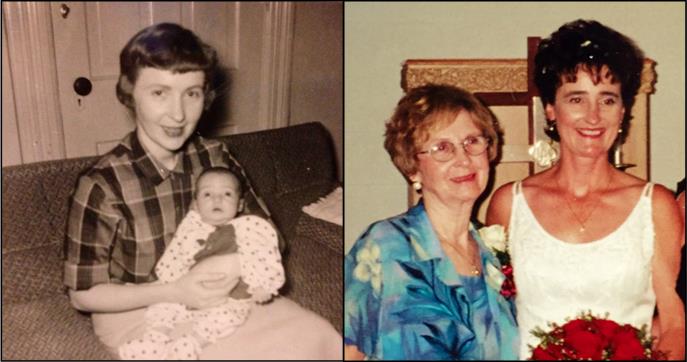My mother, Helen Paul, was diagnosed with Alzheimer’s in the spring of 2001. My father called me earlier in the year saying she was having trouble completing her sentences – she could not remember the words she wanted to use. I made the 40-minute trip to visit and saw for myself. We knew something was wrong, but we weren’t sure what it was. It got worse. We took her to see a neurologist who had her complete a short memory test. She answered only about half of the questions correctly. That was shocking to both of us. While it wasn’t definitive, the neurologist told us it could be Alzheimer’s or another form of dementia. Later the suspicion was confirmed when an MRI showed her hippocampus (the part of the brain that is involved in forming, organizing and storing memory) to be small – much smaller than it should be, a telltale sign of Alzheimer’s.
That summer my dad and I went to a class on Alzheimer’s at the local hospital, so we could learn more about the disease. That’s also where I learned about WRAP. Dr. Mark Sager gave an overview of the disease at one of the sessions and he also talked about the study. Not long after that, I signed up and began traveling to Madison every two to three years to be tested. The seven years of my mother’s decline and eventual death from Alzheimer’s disease was one of the worst things my family and I have ever been through.
A little more than two years after my mother’s death, I got an idea. Because of my personal experience and the difficulties my family faced in caring for my mother, I wanted to tell the story of how this disease affects families and the terrible toll it takes on everyone. I believed that the best way to tell it would be through the lives of several of my colleagues in the WRAP study, utilizing the medium of documentary film. I also wanted to show accurately where we really are on the path to a cure. Many times I read news articles that purported a new drug was “close” to a cure, and I knew this wasn’t so. I believed that a documentary film would be a powerful way to bring this disease to the forefront, instead of it remaining largely in the shadows. As I did additional research I became more educated on how widespread the disease is and will become; I learned that funding for Alzheimer’s research is severely lacking compared to other major diseases and therefore is a huge issue. That information added to the fuel, and so I began the journey to make this film.
In the 6 years that I have been working on this film, I’ve learned much more about Alzheimer’s disease and what it takes to find a way to prevent this disease before it ever manifests itself. It’s been heartening to know that scientists in the WRAP study collaborate with their peers leading other Alzheimer’s research studies and that they share data and findings. This includes The Adult Children Study (Washington University), The BIOCARD Study (Johns Hopkins University), The Offspring Study (Columbia University), and The Vanderbilt Memory and Aging Project (Vanderbilt University Medical Center).
Of the many things I’ve learned, one of the most startling is that about two-thirds of Americans with Alzheimer’s are women. (2017 Alzheimer’s Association Facts and Figures). While there are some hypotheses as to why Alzheimer’s affects more women than men, there isn’t an answer at this point. But the good news is there are research studies around the world asking just this question. In addition, Maria Shriver has rallied around this cause through her organization, The Women’s Alzheimer’s Movement. It is a global alliance focused on solving this question, with the belief that the answer will help solve the disease for all.
Sigrid, Karen and Barb in Will I Be Next? are also fighting for answers. They are donating their time, blood, spinal fluid and most importantly, the examination of how their brains are functioning – to be part of the solution. They are activists at the most basic level – by participating IN research. They are fighting for a cure as daughters at significant risk and as mothers who are concerned for the next generations. They believe that this is the best and maybe only path to a cure.
–Therese Barry-Tanner, Lead Producer
